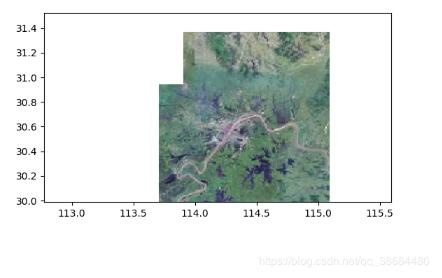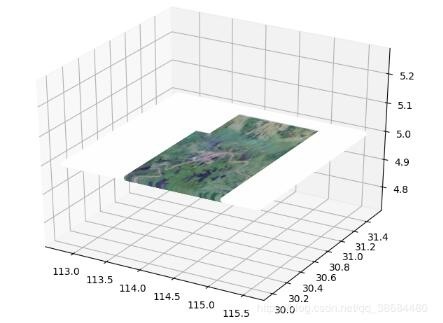Python realizes 3D map visualization
3D map visualization based on python code, for your reference, the specific content is as follows
Introduction
Use Python to visualize the map in 3D. Using the map as a map, you can visualize trajectories and points in three-dimensional space.
Library
We use multiple libraries:
1. gdal;
It is mainly used to read map information. This library is very commonly used in GIS and is written in C++ code. If you cannot install it, you need to find the corresponding resources in pypi.
2. opencv;
Very commonly used image processing library.
3. matplotlib;
Commonly used visualization libraries
result
Don't talk nonsense, directly on the result:


Code
Go directly to the code, the code is very simple.
from osgeo import gdal
import cv2
gdal.UseExceptions()
ds = gdal.Open('E:/Pythoncode/Read geographic information/Untitled.tif')
bandg = ds.GetRasterBand(1)
elevationg = bandg.ReadAsArray()
bandr = ds.GetRasterBand(2)
elevationr = bandr.ReadAsArray()
bandb = ds.GetRasterBand(3)
elevationb = bandb.ReadAsArray()import matplotlib.pyplot as plt
nrows, ncols = elevationr.shape
elevation= cv2.merge([elevationg,elevationr,elevationb])#
# I'm making the assumption that the image isn't rotated/skewed/etc.
# This is not the correct method in general, but let's ignore that for now
# If dxdy or dydx aren't 0, then this will be incorrect
x0, dx, dxdy, y0, dydx, dy = ds.GetGeoTransform()
x1 = x0 + dx * ncols
y1 = y0 + dy * nrows
plt.imshow(elevation, cmap='gist_earth', extent=[x0, x1, y1, y0])
plt.show()from PIL import Image
from mpl_toolkits.mplot3d import Axes3D
import matplotlib.pyplot as plt
fig = plt.figure()
ax =Axes3D(fig)
img = Image.open('E:/Pythoncode/Read geographic information/Untitled.tif')
xx=[]
yy=[]
colall=[]
x = img.size[0]
y = img.size[1]for i inrange(x):for j inrange(y):
r =hex(img.getpixel((i, j))[0])[2:]
b =hex(img.getpixel((i, j))[1])[2:]
g =hex(img.getpixel((i, j))[2])[2:]iflen(r)==1:
r ='0'+ r
iflen(b)==1:
b ='0'+ b
iflen(g)==1:
g ='0'+ g
col ='#'+ r + b + g
colall.append(col)
xx.append(x0 + dx * i)
yy.append(y0 + dy * j)
# col ='#FF00FF'
ax.scatter(xx, yy,5, c=colall, alpha=0.5)
plt.show()
The above is the whole content of this article, I hope it will be helpful to everyone's study.
Recommended Posts